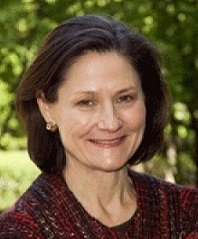America has a prison problem. One out of every 100 adults in the U.S. is behind bars, whether it’s a state or federal prison or a local jail. Even more striking, one out of every 23 is under some form of state supervision. And even if you don’t know anyone on the inside, you are part of the prison culture, says Marie Gottschalk.
“What we have now can only be called a carceral state, and it’s defining who we are as a country,” says Gottschalk, professor of political science and author of Caught: The Prison State and the Lockdown of American Politics. “There is no longer six degrees of separation from the effects of this mass prison population. Whether someone has been under lock and key or is a former inmate, they have all these different regulations and controls on them. So it impacts everything from our voting outcomes to our basic demographic databases, which means unemployment figures, poverty figures, and migration figures are all off.”
The ramifications of having served time lead to what Gottschalk refers to as “civil death.” In addition to not being able to vote, there may be restrictions placed on eligibility for public housing, student loans, and licensing—for everything from hair stylist to palm reader—making successful reentry into society that much more difficult.
“When people come out, we don’t treat them as full citizens, whereas in places like Germany, if you go to prison for a year, they will pay for your house so you don’t lose your residence,” says Gottschalk. “There, if you were working in prison and you come out and don’t have a job, you can qualify for unemployment benefits. You get healthcare benefits. There are many things in place to help restore your citizenship.”
To some this may seem too lenient on criminals, but Gottschalk says that way of thinking is partly due to the fact that Americans have lost the ability to distinguish genuinely dangerous people from those who likely no longer pose a threat to public safety.
“In the past we were able to say that one act didn’t define someone forever. One of the most shocking things is we have the largest “lifers” population of anywhere in the world—about 160,000 people. That’s more than twice the entire prison population of Japan. And that U.S. figure doesn’t even include people with, say, a 60-year sentence, which essentially means you are never getting out.”
Part of this inability to distinguish the criminal from the crime arises from a mythology we’ve created around violent offenders, Gottschalk says, which has led to the countrywide strategy of directing penal reform efforts at releasing “non, non, nons”—non-serious, non-sexual, and non-violent offenders—the so-called “good guys” of the prison system. Many cases require more nuance, Gottschalk argues. A man in his fifties, for example, who was convicted as a first-time offender in a crime-of-passion homicide at a young age, may statistically no longer pose a threat to public safety.
“We’re ratcheting up the penalties as a quid pro quo to supposedly reduce the punishment for these non, non, nons. But it’s demonizing a population of people who are already serving very, very long sentences,” says Gottschalk. “Things like three-strikes laws and mandatory minimum sentences also play a role, and often come down to personal decisions made by law enforcement or prosecutors.”
The inability or unwillingness to reform the system stems from a failure to properly frame the issues, Gottschalk says. One side is advocating reform in response to a system based on racial disparities, while the other is focused on the fiscal burden of the prison system, a polarizing view that simplifies the problem. This hobbles establishment of a powerful political movement to dismantle the carceral state, she contends.
“Some of the prisons that have the highest racial disparities have the most equitable criminal justice systems,” says Gottschalk. “Minnesota, which has something like a 10- or 11-to-one black-white racial disparity, also has one of the lowest incarceration rates in the country. So, in reality, fewer African Americans are being incarcerated. The South, on the other hand, has the highest incarceration rate in the country, but it also has some of the lowest racial disparities in its prisons. So they’re kind of equal opportunity incarcerators there. But in reality a lot more African Americans are getting locked up in the South—along with a lot more poor whites and Latinos. So we need to look deeper into these issues.”
Reform based on what Gottschalk refers to as “fiscal hysteria” often just leads to cuts to the prison budget, directly affecting the quality of life of prisoners. This leads to degrading conditions that can have a negative impact on prisoner outcomes.
“States are not making the hard decisions about closing facilities down,” Gottschalk says. “And so what we’re seeing is meaner cuts: making people who are incarcerated pay for their underwear, or personal items like deodorant or sanitary napkins. You’re legitimizing a race to the bottom. I say to my students, if this were the 1840s and we were trying to mobilize against slavery, is an economic argument a very compelling one? It’s the same thing with mass incarceration.”
Political malaise is often fueled by fear of the public eye, which has resulted in things like a dramatic decrease in the granting of clemencies. “Politicians think the public is more hard line than the public really is, when in fact it’s often just the fears of the legislators.”
What was once an invisible problem is becoming more and more part of the American discourse, however, which is essential to mobilizing the public. “My daughter, she’s at a local high school, and they’re doing a one-month course on mass incarceration,” Gottschalk says. “I can’t imagine them doing a course like that five years ago—people are waking up.”



